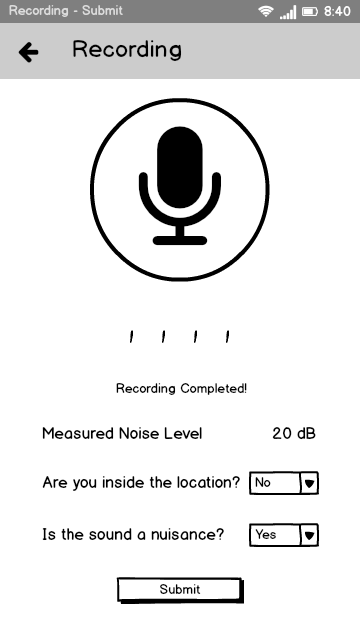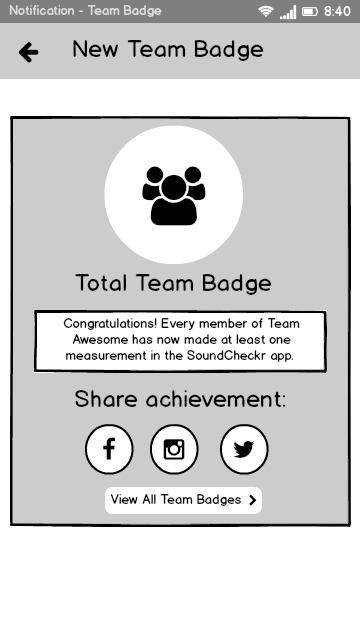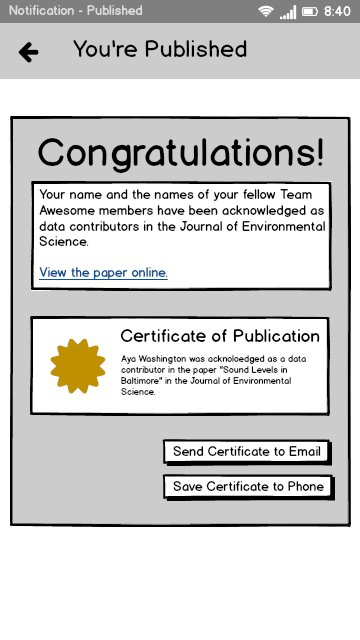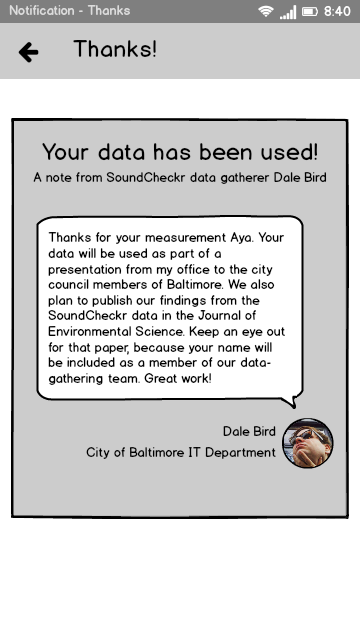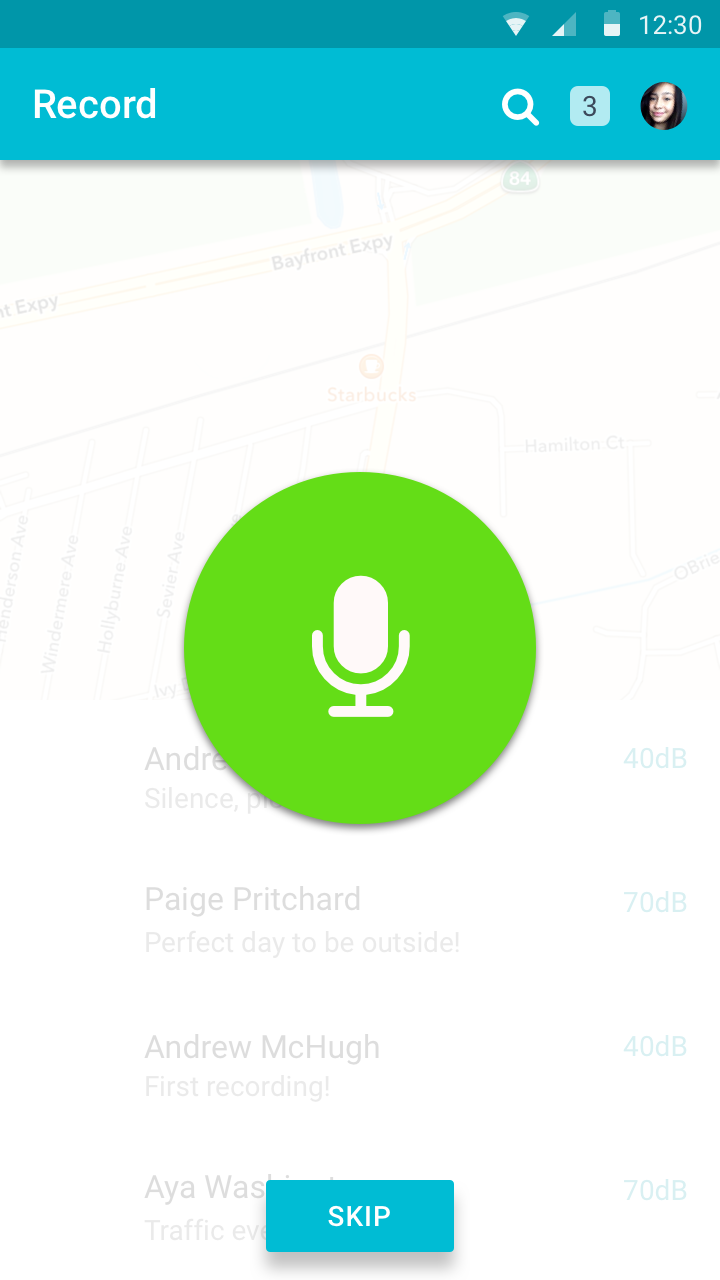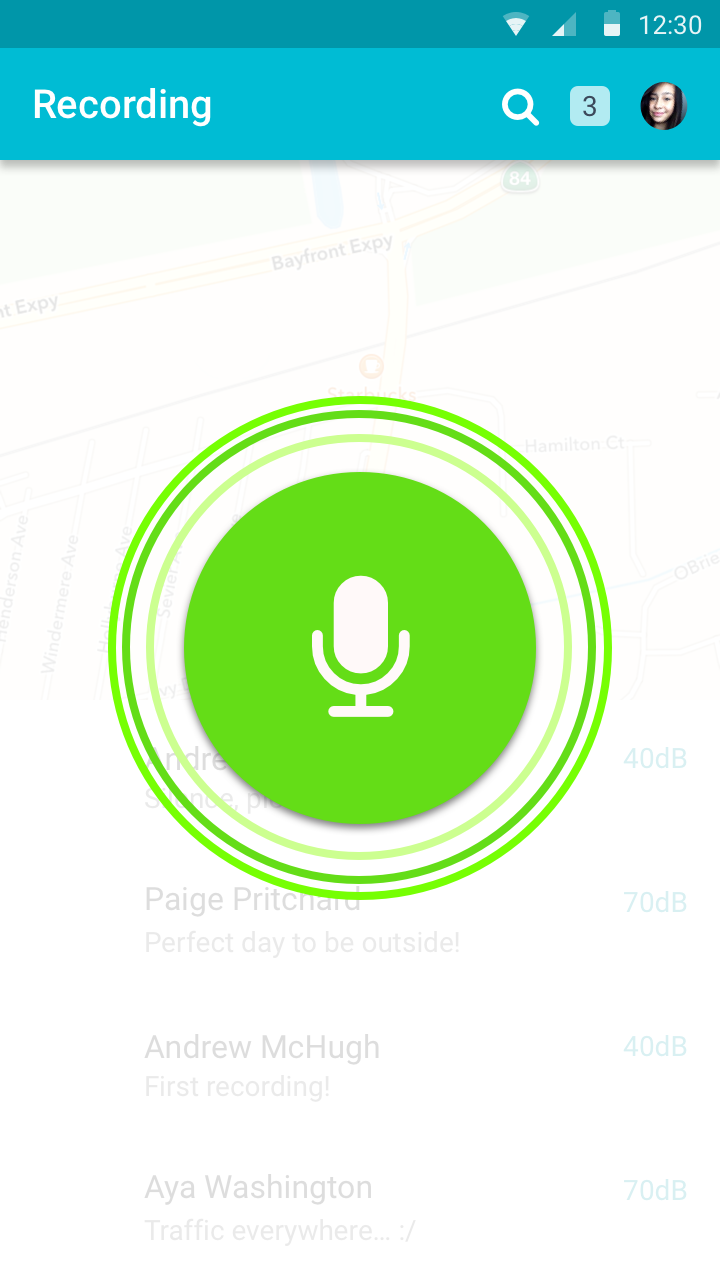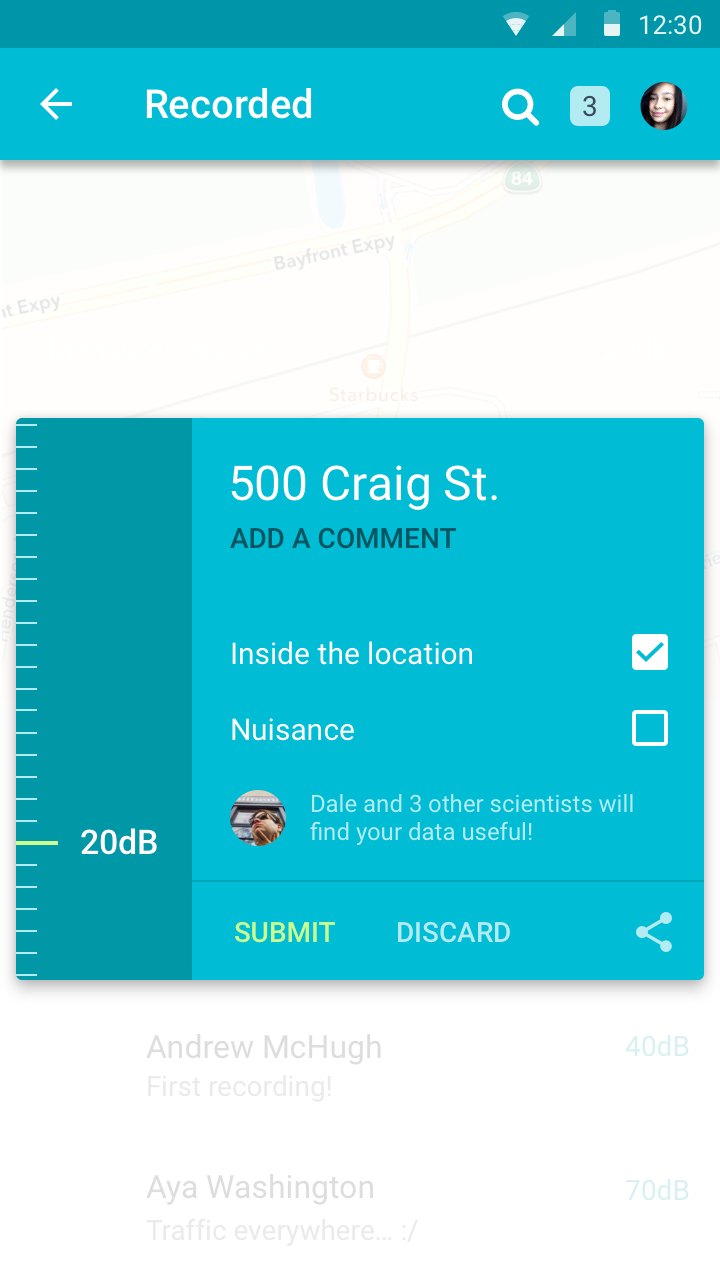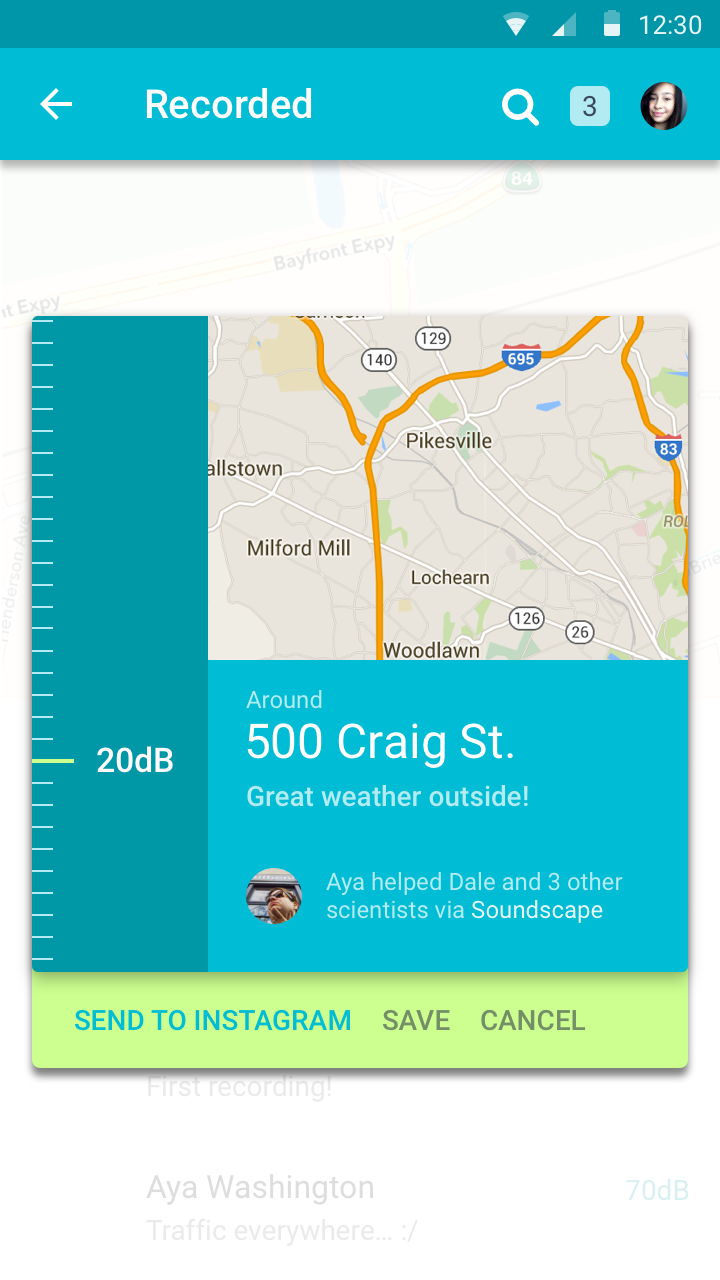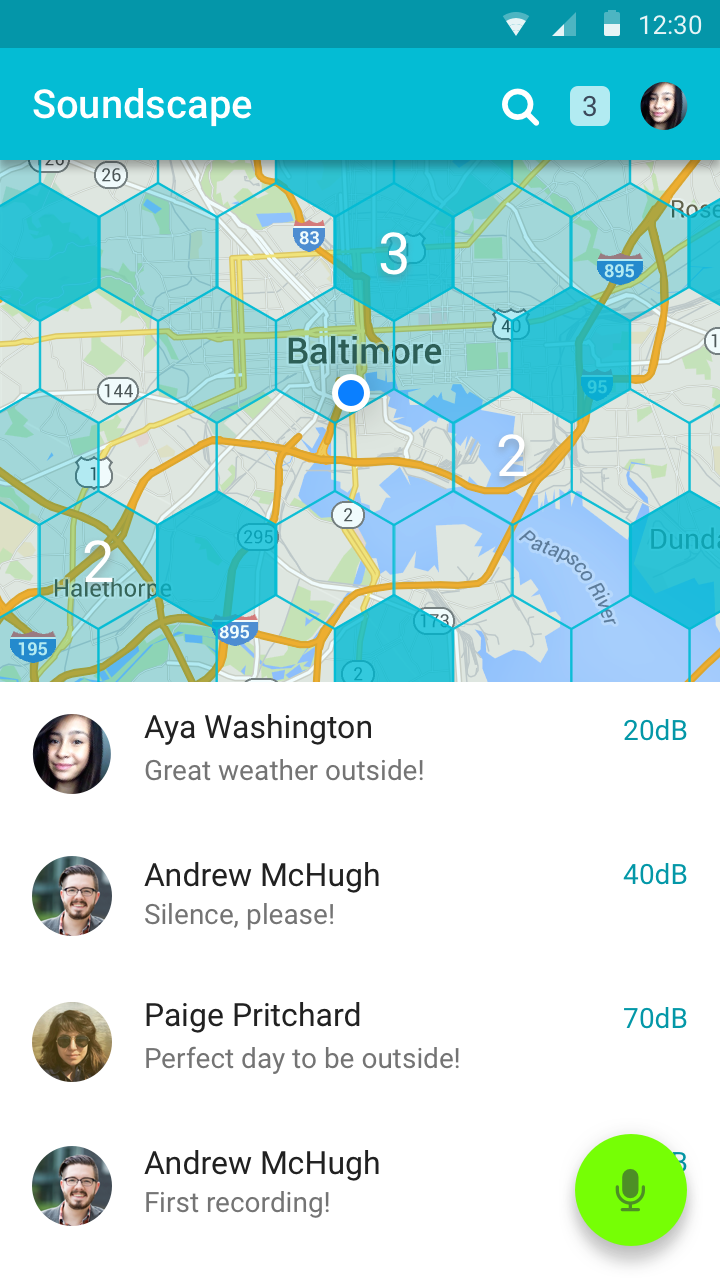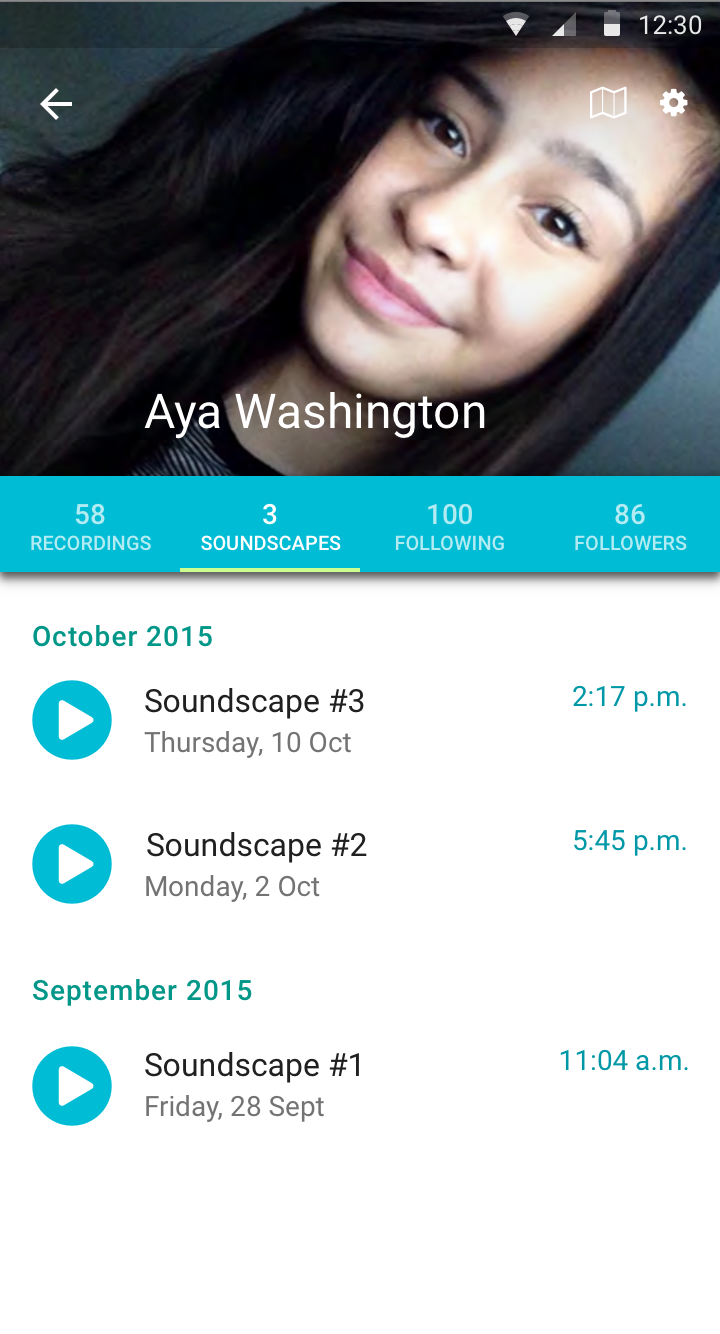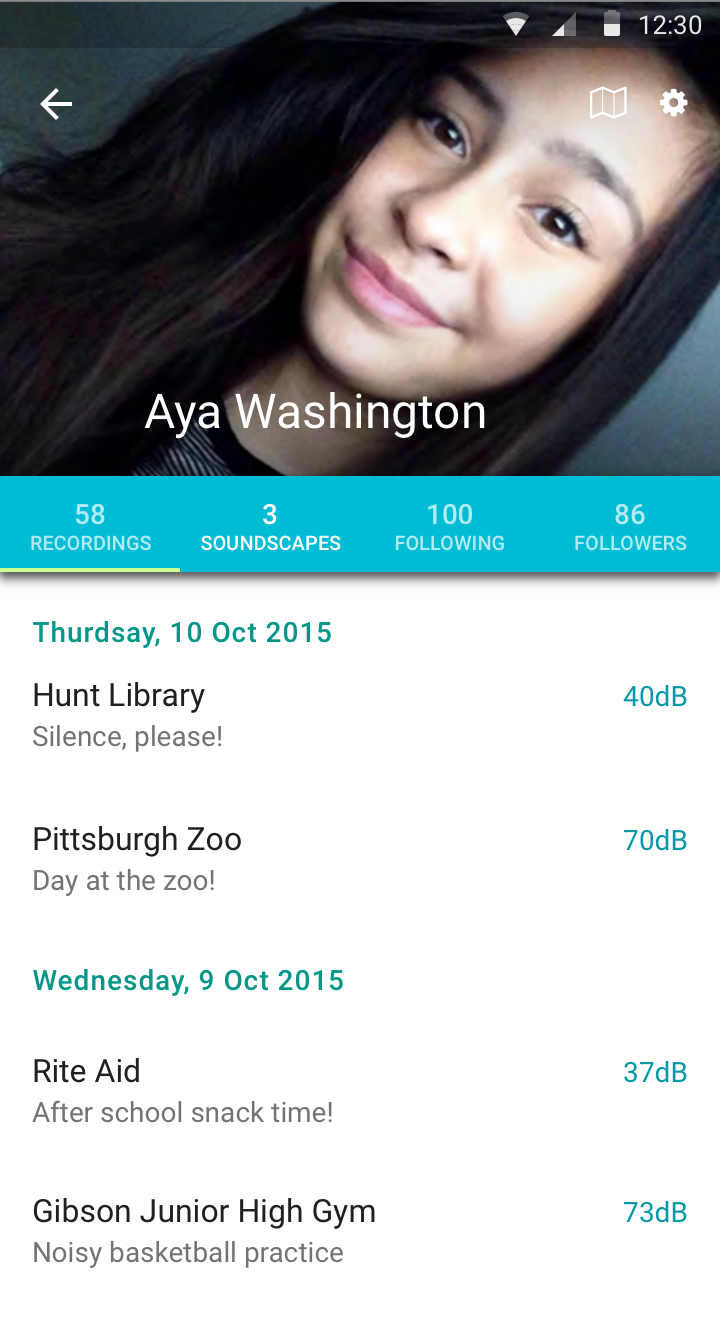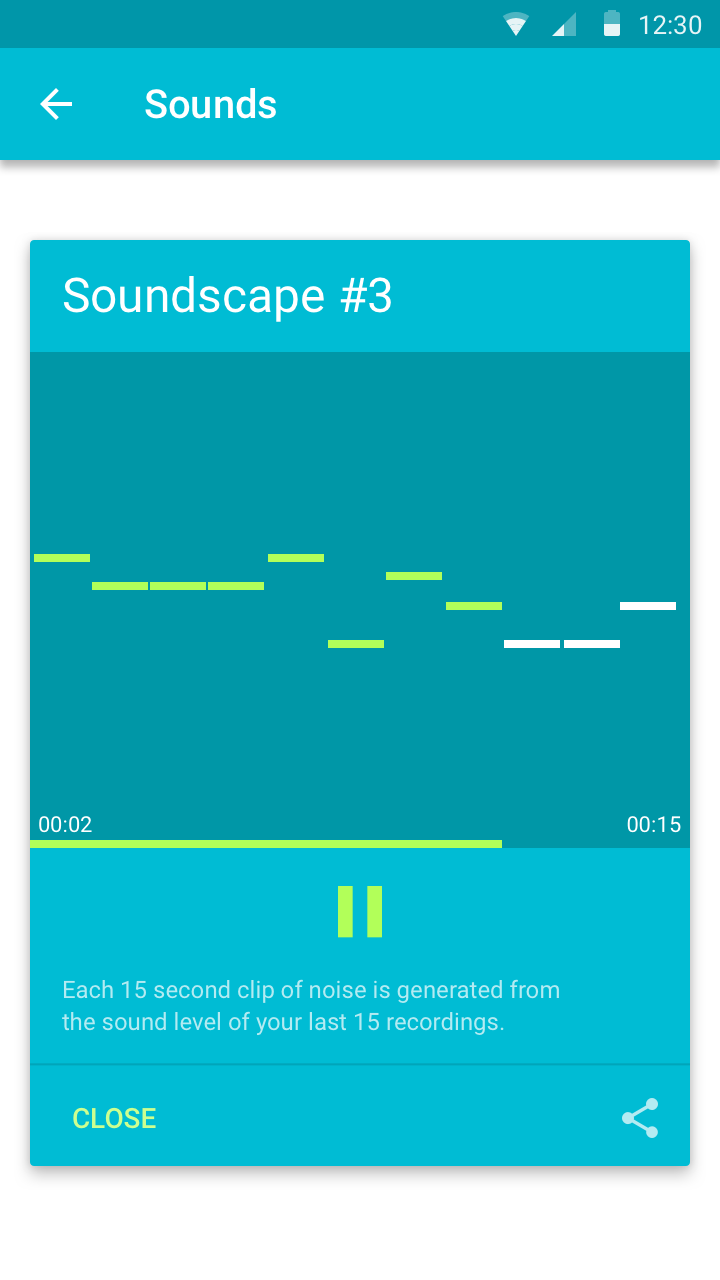Methods
Ecosystem Collection
Personas
Scenario Creation
Storyboarding
Competitive Analysis
Navigational Flow Mapping
Wireframing
Prototyping
Tools
Balsamic
Sketch
InVision
Adobe AfterEffects
Team
Andrew R. McHugh
Paige Pritchard
Prerna Pradeep
Duration
4 weeks
Course
Interaction Design Fundamentals
SOUNDSCAPE
Soundscape is a citizen science application designed for android mobile users. The application aims to motivate users to track noise levels in their city. The data gathered is then available for use by environmentalists/concerned stakeholders.
Problem
Noise pollution is all around us today - the excessive honking, the sirens, screeching of cars, aircraft noise in addition to the sound of millions of people. As city dwellers, many of us have learned to deal with this nuisance. But the adverse side effects of noise pollution still remain.
"We need to think about interventions to reduce noise at source by masking or screening it, or even better by designing our society to be less noisy in the first place" - Stephen Stansfeld, Professor of Psychiatry, Queen Mary University of London
We wanted to design a citizen science based mobile application to monitor noise pollution. This would help engage citizens and environmentalists to take action against the problem.
Personas
These are the two personas that we kept in mind while designing the application.
Aya Washington, Primary Persona
Aya is a 13-year-old seventh grader growing up in Baltimore with her mom and little sister. Aya is a good student at school and is interested in science. She is tech savvy and owns a Samsung S2. She wants to help make her city better and more equitable. She wants to do this with her friends and succeed with them.
Dale Bird, Secondary Persona
Dale Bird, 28, is working towards a master’s degree in environmental science. He wants to go to the city council members with detailed information on which areas have significant problems and data on the cycles that connect events to noise pollution. He wants data that can convince non-scientist politicians of what they should do.
Research
To see what applications already used citizen science, we conducted a competitive analysis. From this, we realized that motivation of citizens to contribute to the data was key. We looked at two possible categories of motivation for contribution in online communities:
• Intrinsic: This type of contribution is motivated by a concern for the larger goal/mission of a community. Theory in this area shows people will contribute when asked, when asked personally, and when they feel their efforts will positively impact someone like themselves.
• Extrinsic: This type of contribution is motivated by offering people rewards (gamification, using badges, points, and other achievement validations to motivate contributions)
We interviewed users who matched our persona and looked into gamification to provide some incentive to measure the data. Instead of providing progress in the form of graphs, we wanted to provide something interesting. We looked into data sonification and music theory to provide a small 15 second audio clip (metadata extracted from the users recordings).
Since the application was an android application, we decided to follow Google’s Material Design guidelines.
Ideation
Based on our personas and their needs, we drafted a set of explanatory scenarios. We created storyboards that covered the main functionality and usage of our app.
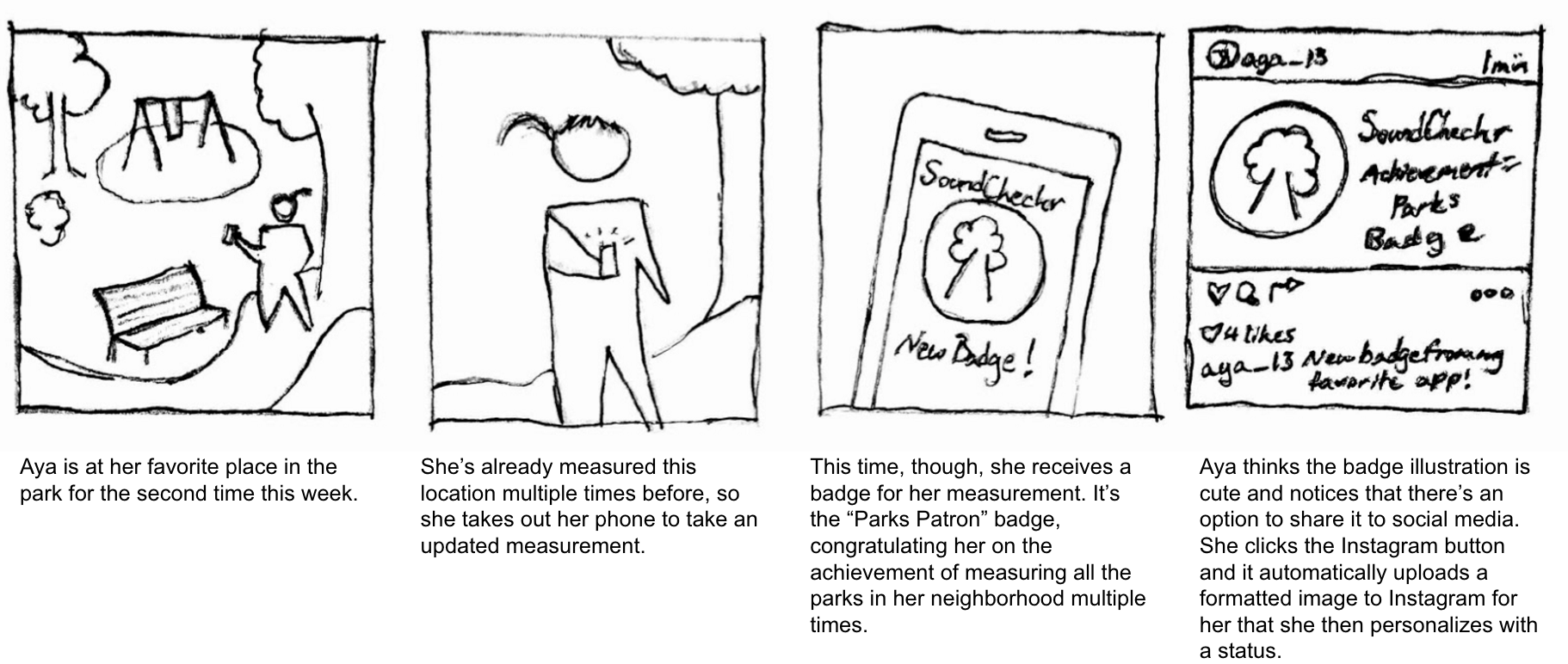
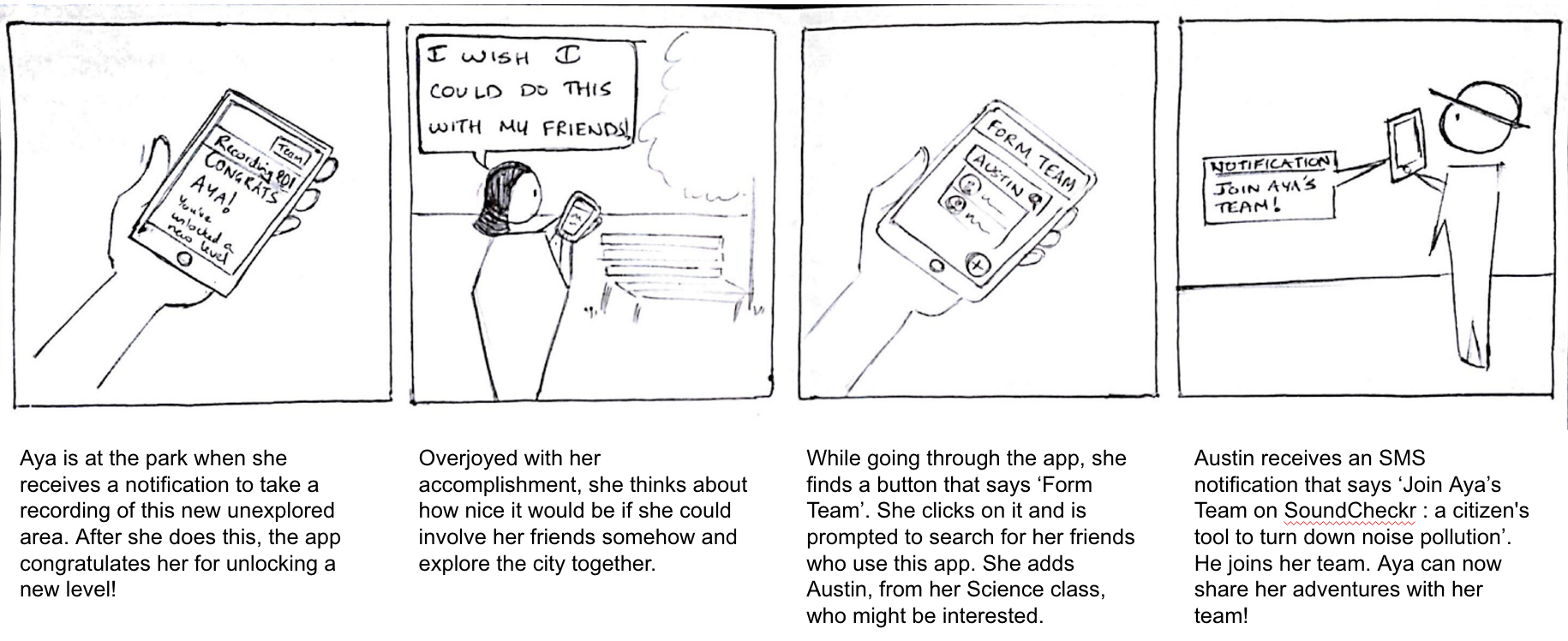
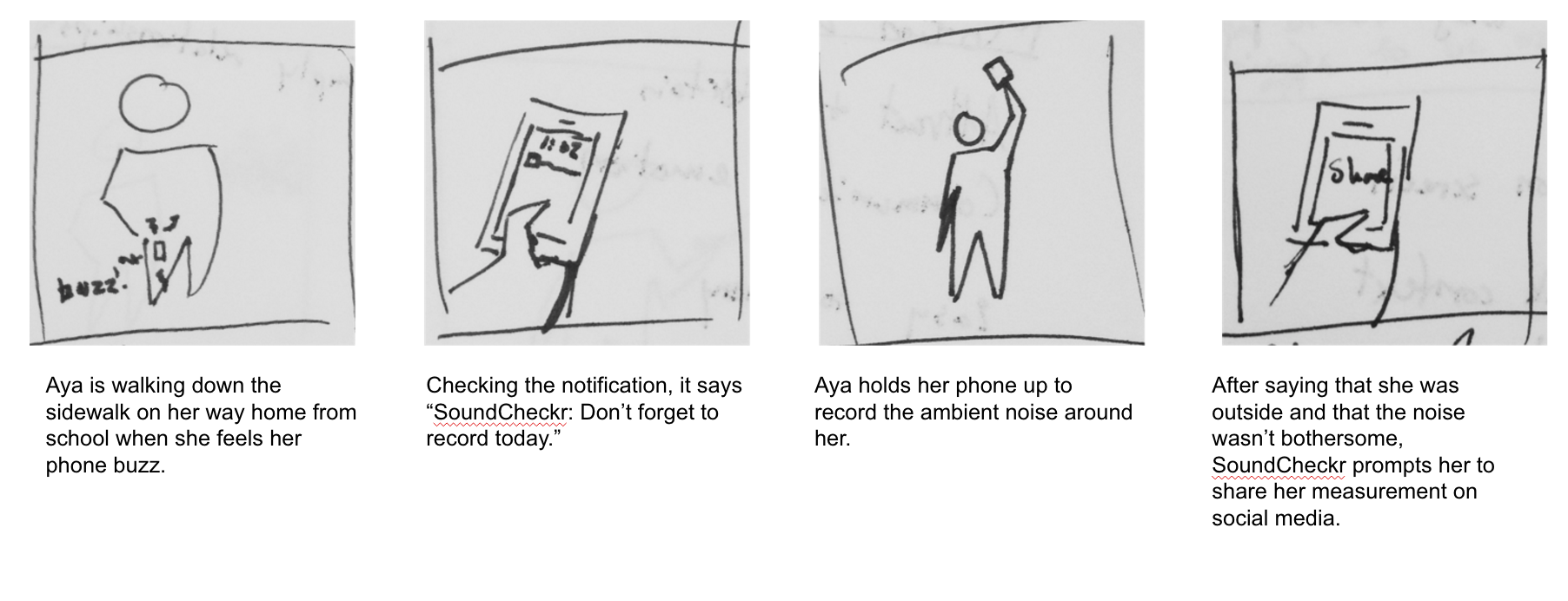

We further refined our scenario based on feedback we received from our professors and peers.
Iteration
Navigational Flow Mapping - Before creating our low fidelity wireframes, we planned how the application screens would flow from one state to the other
Wireframing
We designed the first set of wireframes and then continued to iterate over them while exploring gamification and how our persona could benefit from the app.
Prototyping




